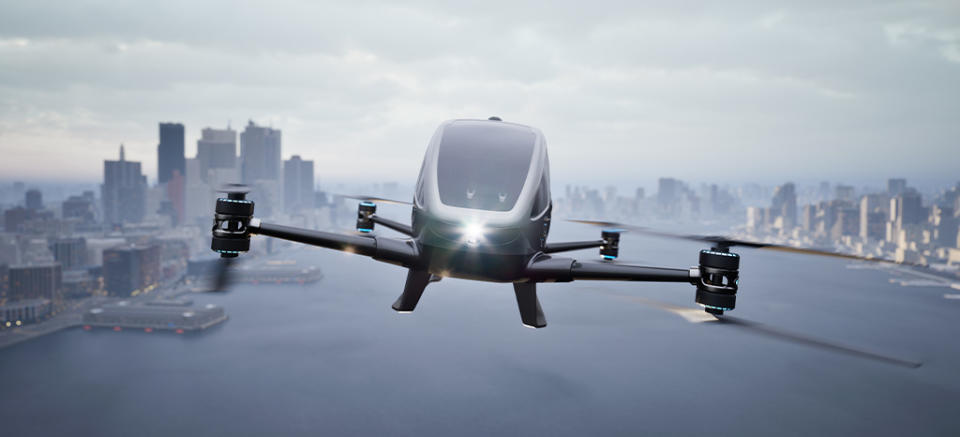Global Aerospace Offers Insights on the Latest Technology Developments and Advantages of Urban Air Mobility
Navigating the Future: Unlocking the Benefits of Urban Air Mobility
Morris Plains, June 26, 2024 (GLOBE NEWSWIRE) -- As a leading provider of risk and insurance solutions for Urban Air Mobility (UAM) companies around the world, Global Aerospace has tended to publish articles focused on the risks and challenges associated with urban aviation. In this edition of Insights, the focus is squarely on the benefits these revolutionary aircraft services will bring as a new era of urban transportation is created.
While the term “Mobility” in UAM generally refers to people, the technologies being developed will have significant applications for cargo, and observations in this article are relevant to those services, including the impact of small drones.
The benefits can generally be grouped into three categories: firstly, those experienced by direct users of flight services and, secondly, broader societal and social advantages. Thirdly, and not to be downplayed, the work being done to create a viable and sustainable UAM industry will have implications beyond just the operation of new electric aircraft.
For example, new hybrid and electric powertrains will pave the way for broader adoption in the aviation industry, and the creation of automated, safe urban airways will have a far-reaching impact on broader air traffic management.
What Advantages Will UAM Bring?
Less congestion
Once at scale, UAM services have the potential to alleviate road congestion. Commuters, airport transfer passengers and delivery customers will all see the direct impact of fast, point-to-point services.
The California Department of Transportation data indicates that 221 million vehicle miles are driven daily in Los Angeles County. While it would take hundreds of aircraft flying shuttles to alleviate a meaningful percentage of that traffic, when coupled with drones making deliveries, it is perhaps possible to see how mass urban air transport could have a significant impact on the ground.
Reduced emissions
Electric aircraft have the potential to significantly reduce emissions compared to traditional aircraft and even the ground transport they are replacing. By eliminating the need for fossil fuels, electric aircraft produce zero direct emissions. This can help address climate change and significantly advance the discussion and progress towards more sustainable forms of transport.
New markets and economic opportunity
The prospect of electric aircraft has already generated billions of dollars of investment. Once realized, new air services will create jobs and opportunities for its workforce, including manufacturing, maintenance and piloting, and within the myriad of ground infrastructure.
For the users of these services, whether for fast delivery of packages or as an efficient way to commute, opportunity abounds. It is hard to put an economic value on reducing your travel time to work or school. Given a choice between sitting in gridlocked traffic or flying efficiently to your destination, it is perhaps easy to see the market potential.
Add to this the knock-on impact to the broader aviation and transportation industries. A truly interconnected network of airports, vertiports and ground transportation hubs serving communities affords opportunities for populations to grow and thrive.
New technologies, big impact
Many aircraft undergoing certification represent a fundamental change in design. Multi-rotor systems, electric propulsion, full composite structures and varying levels of advanced flightdeck autonomy demonstrate a leap in aerospace technology. Combined, these advances have the potential to create safety and ease of operation beyond our current expectations.
Multi-rotor systems introduce groundbreaking levels of redundancy and safety. Most current designs include technology that adjusts motors every millisecond, factoring in atmospheric and navigational changes. This leads not only to passenger comfort but also to safe and repeatable flights, even in more challenging environments.
With ambitions for truly urban flight operations, manufacturers are invested in developing quiet aircraft. The electric motors will be a big contributor to this but so too will the design of the rotor systems. Disturbance to residents is primary among potential barriers to entry into service, particularly once flight operations scale to the level required to provide some relief to ground transportation.
Another significant benefit to electric propulsion is the prospect of lower operating costs. Time between maintenance will be increased, and the absence of lubricants and gearboxes will mean fewer moving parts to maintain and inspect. Furthermore, battery charging will be cheaper than fossil fuels, at least once the infrastructure has been built. Finally, the aim for autonomous flight, remote pilots or even a single onboard pilot based locally to the operation should create a meaningful reduction in workforce expense.
The Progress Is Real
Barely a week goes by without one of the leaders in UAM development releasing news of a major milestone in their development. At the time of going to press in June 2024, the U.S. and European regulators, Federal Aviation Association and European Union Aviation Safety Association, have just released provisional revised guidance for the certification of eVTOL aircraft. This guidance more closely aligns the framework for certification between the two major agencies, creating an easier pathway for manufacturers to achieve broad certification.
There is still much to do. But with demonstrable benefits backed up by investment, regulation and technological progress, the pathway to urban aviation is becoming clearer.
About Global Aerospace
Global Aerospace has a century of experience and powerful passion for providing aviation insurance solutions that protect industry stakeholders and empower the industry to thrive. With financial stability from a pool of the world’s foremost capital, we leverage innovative ideas, advanced technology and a powerful synergy among diverse team members to underwrite and process claims for the many risks our clients face. Headquartered in the UK, we have offices in Canada, France, Germany, Switzerland and throughout the United States. Learn more at https://www.global-aero.com/
Global Aerospace Media Contact
Suzanne Keneally
Vice President, Group Head of Communications
+1 973-490-8588


 Yahoo Finanzas
Yahoo Finanzas 
